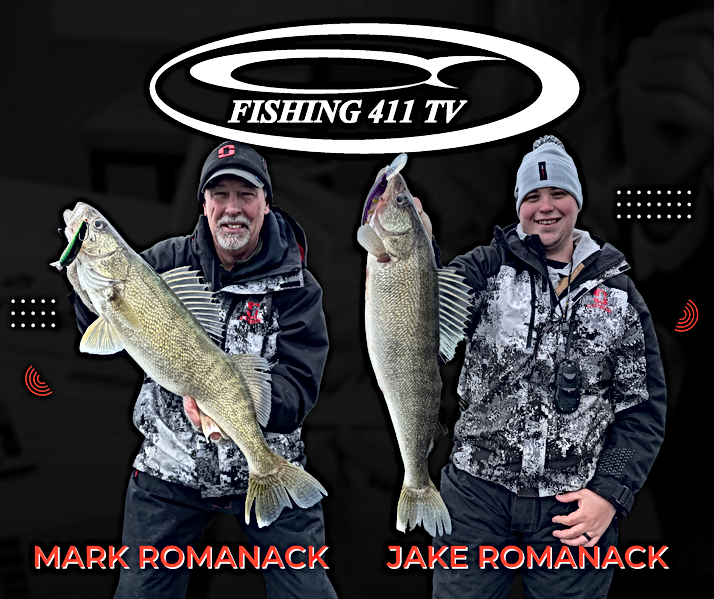
Why do anglers go to the trouble of fishing with long lengths of sinking lines? The answer is as simple as looking at this massive Lake Ontario king caught trolling near the mouth of the Niagara River with Weighted Steel the newest sinking line on the market.
For some time trout and salmon fishermen have been using long lengths of sinking lines to target deep water fish. Lead core line started this craze several decades ago and over time two new players have entered the sinking line market.
SOFT COPPER WIRE
The second sinking line to make a name for itself is soft copper wire, which isn’t actually a commercial fishing line. Needless to say, some smart cookie figured out that the soft wire normally used for wrapping electric motors could be repurposed as a sinking fishing line that fishes deeper than lead core line.
Because copper wire is dense and very heavy, it sinks quickly and achieves significant trolling depths even at common trolling speeds. On the down side, copper wire has many shortcomings. Because copper wire is soft it easily kinks. These kinks eventually lead to the wire becoming weak and breaking. Unfortunately, there are no practical ways to splice damaged copper wire.
On a trolling reel copper wire also tends to backlash easily. To reduce this problem, most anglers fish copper wire with the bait clicker engaged at all times. This trick helps to keep enough tension on the spool that backlashes can be mitigated in the hands of a skilled angler. A rod/reel spooled with copper wire in the hands of someone who hasn’t fished this sinking line is a recipe for disaster.
Because copper wire is soft there are no iron clad ways of terminating copper wire to leader and backing line materials. The Albright Knot is the most commonly used knot for attaching copper wire to leaders and backing line.
Many anglers falsely believe that fishing with “tinned” copper wire eliminates many of the problems associated with this sinking fishing line. Actually “tinned” copper line suffers from all of the associated problems common with un-tinned copper wire.
WEIGHTED STAINLESS STEEL
A new product produced by Torpedo Divers called Weighted Steel is said to fish at the same sink rate as 45 pound test copper wire. Weighted Steel is .039 in diameter. The similarities between copper wire and Weighted Steel end at running depth.
Weighted Steel suffers from none of the problems associated with soft copper wire. Weighted Steel is stronger, spools better, holds up for years of hard use and most of all is user friendly in the backlash department. Weighted Steel is a tightly twisted stainless braid that is sold in pre-measured lengths such as 200 and 300 feet ideal for rigging up sections that feature a braid backing line and fluorocarbon leader. Somewhat tricky to terminate, the Albright knot used with lead core and copper wire does not work with Weighted Steel. Most anglers are using a small barrel swivel attached at both ends of the Weighted Steel using soft wire crimps or by unbraiding the wire and re-braiding it to form a loop. The swivel must be small enough to easily pass through the rod guides and line guide on the reel.
A few videos on YouTube explain in detail the best ways to attach the barrel swivels to Weighted Steel. The most common backing lines used with Weighted Steel are 200 yards of 50 to 65 pound test super braid and at the terminal end a 50 foot leader of 20 to 25 pound test fluorocarbon line.
Weighted Steel wire is hard on rod guides so it is best to fish this line using rods equipped with roller guides and tips.

Trolling with sinking lines including lead core, copper wire and Weighted Steel wire are deadly effective ways of targeting all sorts of Great Lakes species. Here Jake Romanack and Rob Jones (AKA Deacon Smash Master) used lead core to troll up this mixed bag of Lake Erie walleye and steelhead.
THE UPS AND DOWNS
The down side of using sinking lines is of course the cost. To be effective anglers must dedicated specific lengths of sinking line to specific reels, forcing an angler to own and carry a boat load of reels.
The up side is that sinking lines catch lots of fish and they also work nicely in combination with in-line planer boards like the famous Off Shore Tackle OR12. The OR12 will handle up to 10 colors of lead core line and up to 200 feet of Weighted Steel. For fishing longer lengths of lead core or Weighted Steel, the Off Shore Tackle SST Pro Mag board is required.
SUMMING IT UP
For the time being it appears that all three sinking lines will continue to be used for trout and salmon fishing in the Great Lakes. Over time as Weighted Steel wire becomes more accessible, no doubt soft copper wire will once again find itself on electric motors instead of fishing reels.
